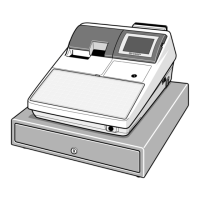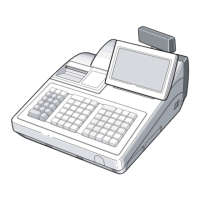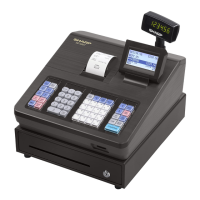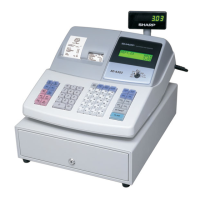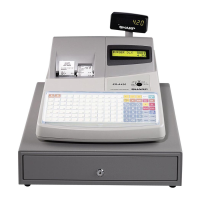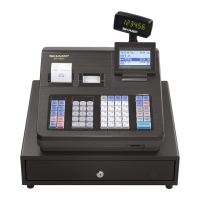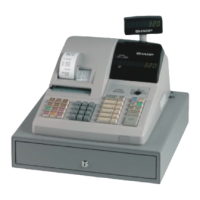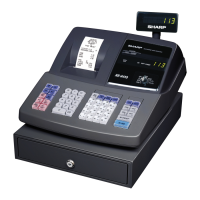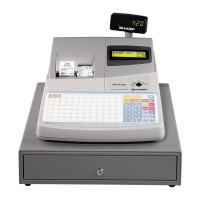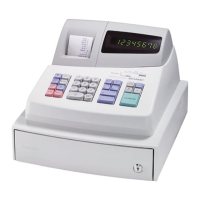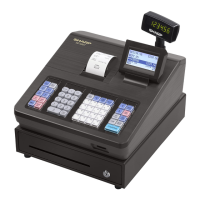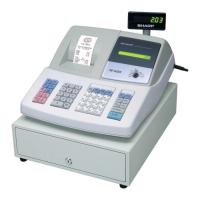6. INTERFACE WITH HOST CPU
1) SIGNAL LINES
The following signal lines are required for the interface with the host CPU.
Signal name I/O Description Connected to Connection pin
A0~A11 I Address Bus from host CPU DP-RAM A0R~A11R
D0~D7 I/O Data Bus from host CPU DP-RAM D0R~D7R
/RD I Read signal from host CPU DP-RAM /OER
/WR I Write signal from host CPU DP-RAM R/WR
/DPCS I Chip select from host CPU DP-RAM /CER
/LRES I Rest signal for this board from host CPU Board CPU /RES
/INTSR O Data read end interrupt from board CPU LOGIC
/INTSW O Data write end interrupt from board CPU LOGIC
A13~A15 I Address bus from host CPU (for decode) LOGIC
Vcc Power(+5V)
GND GND
Signals prefixed with a slash "/" are active in low level.
Cautions to be taken when designing the host side
1. It is preferable that /LRES signal to be input into the board can
also be controlled by software.
2. The access timing satisfies the dual-port SRAM specification.
• Timing Waveform of Read Cycle No. 1, Either Side
(1,2,4)
• Timing Waveform of Read Cycle No. 2, Either Side
(1,3)
NOTES:
1. Timing depends on which signal is asserted last,
OE or CE.
2. Timing depends on which signal is de-asserted first,
OE or CE.
3. R/
W = VIH.
4. Start of valid data depends on which timing becomes effective,
tAOE, tACE or tAA
5. tAA for RAM Address Access and tSAA for Semaphore Address
Access.
• Timing Waveform of Write Cycle No. 1, R/W Controlled Timing
(1,5,8)
NOTES:
1. R/
W or CE must be HIGH during all address transitions.
2. A write occurs during the overlap (tEW or tWP) of a
CE =VIL and
R/
W = VIL.
3. tWR is measured from the earlier of
CE or R/W going to VIH to
the end-of-write cycle.
4. During this period, the I/O pins are in the output state, and input
signals must not be applied.
5. If the
CE = VIL transition occurs simultaneously with or after the
R/
W = VIL transition, the outputs remain in the High-impedance
state.
6. Timing depends on which enable signal (
CE or R/W) is asserted
last.
7. This parameter is guaranteed by device characterization, but is
not production tested. Transition is measured
500mV from
steady state with the Output Test Load (Figure 2).
8. If
OE = VIL during a R/W controlled write cycle, the write pulse
width must be the larger of tWP or (tWZ + tDW) to allow the I/O
drivers to turn off data to be placed on the bus for the required
tDW. If
OE = VIH during an R/W controlled write cycle, this re-
quirement does not apply and the write pulse can be as short as
the specified tWP.
ADDRESS
DATA
OUT
PREVIOUS DATA VALID DATA VALID
t
RC
t
AA
(5)
t
OH
t
OH
CE
OE
DATAOUT
CURRENT
I
SB
ICC
50%
VALID DATA
(4)
50%
t
ACE
t
AOE
(4)
t
LZ
(1)
t
LZ
(1)
t
PU
t
HZ
(2)
t
HZ
(2)
t
PD
ADDRESS
R/W
DATA
OUT
DATA
IN
OE
CE
t
WC
t
AS
(6)
t
AW
t
WP
(2)
(4) (4)
t
LZ
(7)
t
DW
t
DH
t
OW
t
HZ
(7)
t
HZ
(7)
t
WR
(3)
t
WZ
(7)
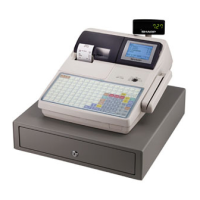
